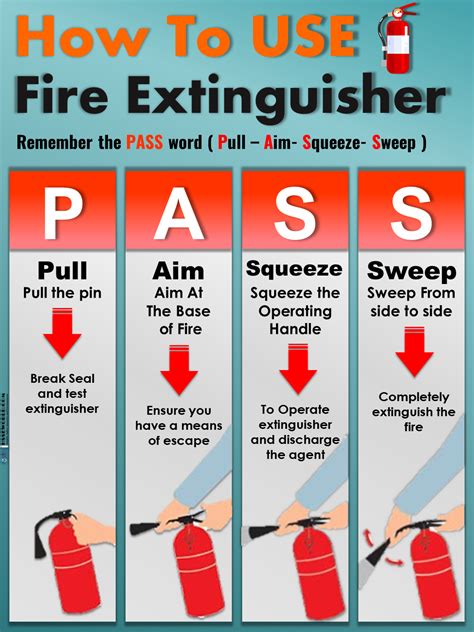Complete Fire Safety: Don't Forget Your Extinguisher
Fire safety is paramount. We diligently plan escape routes, install smoke detectors, and practice drills, but often overlook a crucial element of proactive fire protection: the humble fire extinguisher. Having a readily accessible and properly maintained extinguisher can be the difference between a minor incident and a devastating loss. This comprehensive guide will explore the critical role of fire extinguishers in complete fire safety, addressing common questions and misconceptions.
What Types of Fire Extinguishers Are There?
Fire extinguishers aren't one-size-fits-all. They are categorized by class, indicating the types of fires they're effective against:
- Class A: For ordinary combustibles like wood, paper, cloth, and plastic. These typically use water or water-based agents.
- Class B: For flammable liquids like grease, gasoline, and oil. These often use carbon dioxide or dry chemical agents.
- Class C: For electrical fires involving energized electrical equipment. These use non-conductive agents like carbon dioxide or dry chemical.
- Class D: For combustible metals like magnesium, titanium, and sodium. These require specialized extinguishers and are less common in homes.
- Class K: For cooking oils and greases found in commercial kitchens. These use wet chemical agents.
Many extinguishers are multi-purpose (e.g., ABC), covering multiple classes. However, understanding the specific classes of fire hazards in your home or workplace is vital for selecting the appropriate extinguisher.
Where Should I Place My Fire Extinguisher?
Placement is key. Your extinguisher needs to be:
- Easily accessible: Keep it in a visible and convenient location, away from potential fire hazards but close enough to quickly reach it. Avoid placing it behind obstructions or in areas that might be blocked during an emergency.
- Clearly marked: Ensure the extinguisher is clearly visible and identifiable as such.
- Upright: Store it upright to maintain proper functionality.
How Do I Use a Fire Extinguisher? (PASS Method)
Remember the PASS method:
- Pull the pin: Remove the safety pin.
- Aim at the base of the fire: Direct the nozzle at the base of the flames, not the top.
- Squeeze the lever: Squeeze or press the handle to release the extinguishing agent.
- Sweep from side to side: Sweep the nozzle back and forth to cover the affected area.
Important Note: Only attempt to extinguish a fire if it is small and contained. If the fire is spreading rapidly, evacuate immediately and call emergency services. Your safety is paramount.
How Often Should I Inspect My Fire Extinguisher?
Regular inspection is critical. Check your extinguisher monthly for:
- Pressure gauge: Ensure the needle is within the operating range.
- Damage: Inspect for dents, rust, or other damage to the cylinder or nozzle.
- Obstructions: Make sure the nozzle is clear and unobstructed.
Professional inspections and recharging should be carried out annually or as recommended by the manufacturer.
What Should I Do if My Fire Extinguisher Malfunctions?
If your extinguisher malfunctions, do not attempt to repair it yourself. Contact a qualified fire extinguisher servicing professional for inspection and repair or replacement.
Is a Fire Extinguisher Enough for Complete Fire Safety?
While a fire extinguisher is a crucial element of a comprehensive fire safety plan, it's not a standalone solution. It forms part of a larger strategy that includes:
- Working Smoke Detectors: Essential for early fire detection.
- Clear Escape Routes: Designated and practiced escape plans.
- Fire-Resistant Materials: Using fire-retardant materials where possible.
- Regular Fire Drills: Practicing evacuation procedures.
What are the different classes of fire and what extinguisher do I need?
As mentioned earlier, different classes of fire require different types of extinguishers. A Class A extinguisher is suitable for ordinary combustibles, Class B for flammable liquids, Class C for electrical fires, Class D for combustible metals, and Class K for kitchen fires. Choosing a multi-purpose extinguisher (like ABC) is often a good option for home use, covering a broad range of common fire hazards.
How do I know if my fire extinguisher needs to be replaced?
Several factors indicate the need for fire extinguisher replacement. A damaged cylinder, a malfunctioning pressure gauge showing it's outside the operational range, or exceeding the manufacturer's recommended service interval all necessitate replacement. Don't attempt repairs; call a professional.
Can I recharge my own fire extinguisher?
No, you should not attempt to recharge your own fire extinguisher. This requires specialized equipment and training. Improper recharging can render the extinguisher ineffective or even dangerous. Always contact a qualified fire extinguisher servicing company for recharging.
By understanding the types, proper placement, usage, and maintenance of fire extinguishers, alongside other vital fire safety precautions, you significantly reduce the risk of property damage and personal injury. Remember, a fire extinguisher is just one piece of the puzzle, but it’s a critical piece that can make all the difference.

